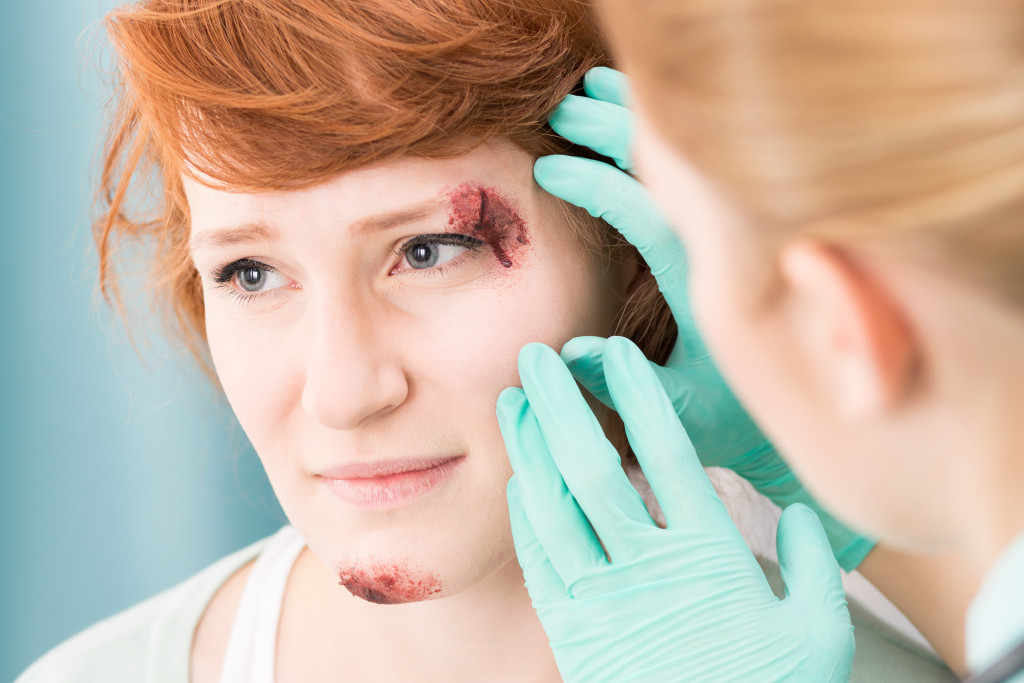- Properly caring for a large wound prevents infection and promotes healing.
- Wounds go through inflammation, proliferation, and remodeling stages during the healing process.
- Different methods may be used to close wounds, including stitches, staples, or medical-grade skin adhesives.
- Critical steps for caring for a large wound include keeping it clean and using skin adhesives.
- Proper nutrition, moisturization, and enough sleep are crucial for optimal wound healing.
Big wounds can be painful, and keeping them clean and free from infection can be a real challenge. Whether you’ve had surgery, an accident, or an injury, healing a big wound requires patience and care.
If not properly treated, a wound can become infected, which can be dangerous and slow the healing process. When caring for significant damage, having the right tools and knowledge is important.
Understanding Wound Closure
Before diving into wound care, it’s essential to understand how wounds heal. Wounds go through several healing stages, including inflammation, proliferation, and remodeling. During the inflammatory phase, white blood cells rush to the wound site to fight off any foreign pathogens and clean the area.
In the proliferation stage, new tissue forms over the wound to create new skin. Finally, during the remodeling stage, the newly formed tissue strengthens and contracts, leading to a smaller scar.
Different Kinds of Wound Closure

Depending on the size and depth of the wound, different methods may be used to close it. Some injuries may require stitches or sutures, while others require staples or adhesive strips. Sometimes, a healthcare professional may leave a wound open to heal from the inside out.
In addition, certain wounds, such as burns or pressure ulcers, may require specialized wound closure techniques. It’s essential to consult with your healthcare provider to determine the best method for closing a large wound.
Tips for Caring for a Large Wound
There are several vital steps to follow when caring for a large wound. And each step is crucial in promoting proper healing and preventing infection.
Keep the wound clean.
The first step in healing a big wound is to ensure it is clean. Wash the wound with lukewarm water and soap, and then pat it dry with a clean towel. It is best to use a non-stick dressing to cover the damage. Change the dressing daily or as needed, and clean the wound area each time.
Use Skin Adhesives
Covering a wound with traditional bandages or gauze can be difficult and may not provide adequate protection. In recent years, medical-grade skin adhesives have become increasingly popular for closing large wounds.
These adhesives create a waterproof and bacteria-resistant barrier over the wound, promoting faster healing and reducing infection risk. Doctors and many athletes rely on these adhesives to protect their injuries during healing, allowing them to move freely without worrying about the wound opening or becoming contaminated.
Eat a balanced diet
Proper nutrition is essential for wound healing. Eat a well-rounded diet that includes protein, vitamins, and minerals, all critical for rebuilding damaged tissue. Some excellent sources of protein are lean meats, fish, and poultry. Also, choose fruits and vegetables as they provide vitamins, such as vitamin C, which is important for collagen synthesis.
Keep the wound moisturized

Contrary to what most people believe, keeping the wound moist can help accelerate healing. You can use an ointment or cream your doctor prescribes or buy it at a pharmacy. These products can help keep the wound moist and prevent scarring.
Get enough sleep
When you sleep, your body repairs itself, so getting enough rest each night is crucial. Our bodies release growth hormones while we sleep, which help in healing tissues and boost the immune system. So, get at least 7-8 hours of sleep each night.
Watch for signs of infection
While healing, it’s essential to watch for any signs of an infection, such as redness around the wound, pus, fever, or increased pain. If you notice any of these signs, contact your doctor right away. An infection can slow down the healing process and, if left unattended, can lead to severe complications.
Wrapping Up
Taking care of a big wound requires time, attention, and effort. But with patience and proper care, you can speed up the healing process and avoid further health complications. Remember to keep the wound clean, eat a balanced diet, keep it moisturized, get enough sleep, and watch for signs of infection.
If you have any doubts or concerns, don’t hesitate to consult with a medical expert who can guide you through the process. By following these tips, you can ensure that your wound heals correctly and you can get back to your active life as soon as possible.




